How to Plant Broad Beans in your Garden: Complete Guide in [12 Steps]
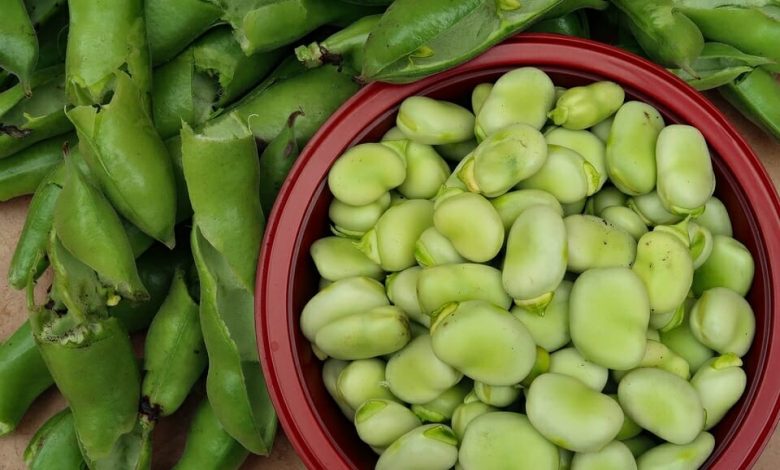
Do you know Pythagoras?
Yes, the famous Greek mathematician. The same as the Pythagorean theorem.
Well, this genius did not like broad beans at all ! He said that beans resembled female private parts and the gates of Hades.
Incredible that such an intelligent person could believe such a thing. But what is clear is that in this casePythagoras was wrong.
Why? Because beans are an excellent food.tremendously nutritious. Really.
If you have come this far, you are probably interested in learning how to plant broad beans. Well, in the following article we are going to describe to you step by step what you need to be successful.
Take a look below and join me
How to Plant Broad Beans Step by Step:
- When? Generally at the end of Autumn. In very cold climates in late spring.
- Where? In a place that receives a lot of sunlight. The maximum number of hours per day.
- Harvest time? They can be harvested between 90-120 days from sowing.

- How do we prepare the land? Soft, deep and loose soils (motor tiller). Rich in organic matter and the optimal pH ranges between 7.3 and 8.2.
- How do we pay? Earthworm humus and highly decomposed organic matter, such as manure or organic compost.
- How do we water? Ideal, with drip irrigation.
- How often do we water? Broad beans require a lot of water. So we will water every 2-3 days for about 30 minutes. In case of rain we will space the risks.
- How do we sow? Introduce the seed into the soil, to a maximum depth of 6cm. The black part of the seed that hits the ground.
- How do we harvest? The time to harvest them tender is when the pods turn yellow.
- Favorable associations? Potato, spinach, rosemary and lettuce. Other legumes and grasses.
- Associations NOT favorable? Garlic, onion, leek, asparagus or aloe vera.
- Plagues and diseases? Aphids, pea thrips, mildew, rust, brotytis, sitona.
LBroad beans, Vicia faba, are legumes that provide us with many nutritional benefits.
Originally from the Middle East, broad beans have been consumed for thousands of years in Mediterranean countries and their cultivation has spread to warm climates around the world.
They can be grown in a variety of climates and require little care, making them an excellent choice for growing in our garden.
Method for Growing Broad Beans [11 Steps]
- Clear the ground and leave the soil as loose as possible.Extracts weeds and remains of previous crops.
- Fertilize the soil at least fifteen days before sowing.
- Moisten the ground before planting broad beans. Preferably the night before. Remember that the water should not be stagnant
- It forms ridges of earth.The sowing of broad beans should be done in lines and hits, that is, holes should be dug on each furrow and two to three seeds should be placed inside. The separation between lines or ridges must not be less than 50 centimeters. Likewise, between each hole there must be a minimum distance of 40 centimeters.
- Put the seeds in the soil. Make sure they are kept to a maximum depth of 6 centimeters. Find the black part on the seed and plant it down. Then cover it lightly.
- Select the healthiest and strongest seedlings.The seeds will germinate in 7-10 days. If more than one seed has germinated in each hole, keep the strongest one. To do this, do not pull the weak one, as you can damage the leaves. A simple pruning at ground level is sufficient.
- In general, the tasks after sowing are quite simple. You have to keep the soil clean of weeds and the soil well mulched, drained and aerated.
- Stake plants as they begin to gain height. As they grow, the bushes will become laden with heavy pods and can collapse if not well supported. You can prevent this by planting stakes next to your plants to help them grow. Tie the plant to each stake using twine. This will provide them with good support. This will also prevent the presence of mold on the stems.
- Protect your plants. Use mesh to protect your plants from pests and possible predators, especially rodents and lagomorphs. The meshes leave enough space for growth and air flow. They are also an excellent help in the fall, as they will help keep the heat close to the ground and thus protect the plants from frost.
- Remove the new shoots.The plant will overproduce unless you remove the shoots from the top of the plant as soon as you see them producing. You can also harvest some of the leaves to eat them.
- Be on the lookout for fungal disease and rot at the base of the plants. If you see yellowish or whitish spots, it means that you should water them less and ventilate them more.
What are the main benefits of broad beans?
Broad beans are rich in protein and iron. They also contain vitamin C and provide a large load of carbohydrates, fiber, cellulose, potassium, sodium, phosphorus and magnesium.
- They have a low glycemic index, being highly recommended for people with diabetes or who must take care of their blood sugar levels.
- They have diuretic and purifying action.
- Their contribution in potassium makes them recommended for people with hypertension, poor blood circulation or who suffer from fluid retention.
- The phosphorus they provide helps keep the brain healthy.
- They also provide greater physical resistance, as well as in the skin, teeth and bones.
What varieties of broad bean are there?
The most widely planted broad bean varieties are:
- Aguadulce or SevillanaAppearance: It is an early variety, with large pods, up to 30 cm long. Your cycle is around 200 days. This variety is ideal for winter or late fall planting.
- Grenadine: for green or grain consumption. Its seeds are quite large and light in color. It is the variety that best resists the cold.
- Sutton: It grows only 30 cm high, which makes it an excellent choice for small gardens and small spaces.
- White and purple mahon: it is a variety very resistant to drought, but very sensitive to cold. The plants reach up to a meter and a half in height.
- Imperial Green Longpod: Produces 38 cm long pods with several grains each.
- Red Sybarite: Produces bright red beans.
- Muchamiel: coming from Alicante, it is the variety that is most cultivated in the Mediterranean area. It is an early variety, with tall plants and pods between 15 and 20 cm. Its vegetative cycle varies between 190 and 200 days.
- stereo: it is a variety of compact plants that produce a lot. The beans they produce are so sweet that they can be eaten raw.[/su_list]
To learn more, read: Varieties of broad beans.
Did you know…One way to soften their flavor is to boil them together with bay leaves, mint or any other aromatic herb.
When to grow beans? The dates
 Sowing: The sowing time is linked to the weather and is generally done at the end of autumn.
Sowing: The sowing time is linked to the weather and is generally done at the end of autumn.
As the crop prefers uniform warm-temperate temperatures, in very cold climates sowing until spring is preferable.
Harvest: Depending on the variety, you can harvest them approximately 90 days after planting.
What temperature and luminosity do they require?
Broad beans require agood sun exposureso that they form well.
If you place the plants in partial shade, this could cause the fall of the leaves and certain deficiencies in their development.
Broad beans are not demanding in terms of temperature, however, as we have already mentioned, they prefer uniform temperate -warm temperatures and maritime climates better than continental ones.
In general terms, broad beans need an average temperature of 16ºC, although they tolerate frost well.
As an important fact, the seeds do not germinate above 20 ºC and, during the period between flowering and pod setting, care must be taken that the temperature does not exceed 30 ºC, as this could cause malformations and abortions. in immature pods.
Recommendations:
- Locate your broad bean plants in an area with good sun exposure.
- Try to plant in sunny places.
Did you know…Currently in Italy, bean-shaped sweets are consumed on All Souls’ Day
How do we water our beans?
Important points when watering beans:
- Irrigation frequency: about 3 irrigations per week in the days after sowing, during flowering and during pod formation. From 1 to 2 weekly irrigations the rest of the days.
- Irrigation method: drip.
- Optimum time of day for irrigation: either first thing in the morning or wait until nightfall.
- Identify excess water: weakening of the structure, especially the neck. appearance of fungi.
- Identify lack of water: falling flowers, underfilled pods, decayed foliage, low production.
What irrigation needs do they have?
Broad beans need a good level of humidity in the soil, although not with very frequent watering.This means that the application of irrigation will maintain a specific frequency and you will have to find a strategy so that the humidity in the soil is maintained.
It is advisable to apply mulch because it helps protect the roots from excess cold and also takes care of the soil’s humidity. Even with this technique, sometimes it will not be necessary to apply irrigation if there has been any rain.
How can we detect lack of irrigation in broad beans?
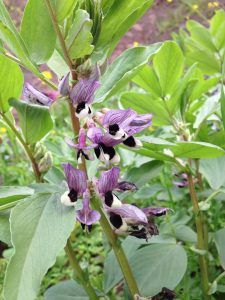 Broad beans are especially sensitive to lack of water during their growth phase. An unusable irrigation could cause the blooms to not be abundant or the flowers to fall before transforming.
Broad beans are especially sensitive to lack of water during their growth phase. An unusable irrigation could cause the blooms to not be abundant or the flowers to fall before transforming.
In the same way, if it is generated while the pods are in formation, they could be little filled, which would have a negative impact at the time of harvest.
If the lack of water is at the beginning of planting, the plant may not develop with the expected texture to achieve good production.
And, in general, it will have an impact on the foliage, which could fall or be less abundant, thus generating a poor harvest.
How often should we water them?
You will have to establish the frequency of irrigation of the broad beans according to the stage of development in which the plant is. In this way we have:
- Days after the harvest: administer up to 3 irrigations per week if necessary, since the humidity at this point is decisive for the growth of the plant.
- Development cycle: the amount of water you must provide is reduced, so it could need 1 to 2 weekly waterings.
- Flowering and pod development: the need for water to carry out these processes increases again, so it is likely that you will have to apply up to 3 weekly waterings again.
What is the best way to water them?
The method that works best for broad beans is dripping because it makes it easier to distribute the water evenly without putting the foliage at risk. It is important that at the time of watering, neither the leaves, nor the flowers, nor the pods receive moisture because they could burn with the sun.

In addition to that, they can become an ideal place for the development of certain fungi that are moisture lovers. Another advantageous aspect to prefer dripping is that it helps to distribute water at the correct levels to reduce possible puddles.
How do we detect excess water in beans?
Las plantas de habas son de poca altura, lo que podría ocasionar severos daños en el cuello si es sometida a encharcamientos.El exceso de agua causa un debilitamiento general de la estructura, ya que pareciera que se estuviese pudriendo lentamente.
La realidad es que esto es lo que sucede a nivel radicular y se manifiesta de esa forma en la parte aérea.Otra señal de que el riego está siendo excesivo es la aparición de hongos que dañarán de forma severa a la planta.El consumo de habas es muy usual por el aporte vitamínico que suponen hacia cualquier dieta.
Lograr un buen cultivo será posible siguiendo todas las estrategias recomendadas por especialistas, donde se encuentra el riego de habas por supuesto.Lo importante, en resumen, es mantener un buen nivel de humedad sin necesidad de que se produzcan encharcamientos.
Y gracias a que se cosecha en tiempos de frío, tendrás un apoyo valioso en esta materia porque la tierra tardará un poco más en secarse que si estuviese en verano.¿Te queda alguna duda? Aprovecha los comentarios más abajo para que juntos la solucionemos.
Recomendaciones finales sobre el riego de las habas:
- Al utilizar humus de lombriz también estarás favoreciendo el buen drenaje de la tierra.
- Si lo prefieres, puedes hacer una mezcla de 300 kilogramos de súper fosfato y 150 de potasio por hectárea. Esta mezcla es ideal para suelos de tipo medio. Abona al menos quince días antes de la siembra. Para hacerlo, lo mejor es perforar el suelo con una pala o rastrillo antes de añadirle la mezcla. Esto facilita que los aditivos se mezclen y, al mismo tiempo, favoreces al sistema radicular de la planta.
- Si tu jardín tiende a inundarse, es necesario que hagas todo lo posible para solucionarlo. Puedes crear pendientes para que el agua escurra hacia un lado e instalar canaletas para que sea más fácil recoger el agua.
- Otra técnica eficaz para favorecer el drenaje es crear montículos de tierra y sembrar las habas sobre ellos, así se acumulará menos agua al pie de tus plantas. En el momento de plantar, aporta una buena cantidad de mantillo, composta, turba o estiércol para esponjar el suelo y airearlo. Si además le echas arena de río y lo mezclas bien con la tierra el resultado será favorable.
- En casos extremos, lo mejor será que instales una red de tuberías de drenaje.
El sustrato y los nutrientes: ¿Cómo preparamos la tierra?
Como las legumbres se fertilizan a sí mismas, es poco exigente al suelo y puede desarrollarse en una gran multitud de condiciones.
Sin embargo, prefiere los suelos sueltos y mullidos, arcillosos o arcillosos calizos, y muy ricos en materia orgánica. De preferencia que sean profundos y frescos.
Es relativamente tolerante a la salinidad y le perjudican los suelos húmedos mal drenados.
El pH óptimo oscila entre 7.3 y 8.2.
 No necesitan una fertilización excesiva, ya que esta planta fija el nitrógeno del aire y responde bien a abonados de fósforo y potasio durante la floración y la fructificación.
No necesitan una fertilización excesiva, ya que esta planta fija el nitrógeno del aire y responde bien a abonados de fósforo y potasio durante la floración y la fructificación.
Si te apetece, puedes ayudarle a la planta a transformar el nitrógeno, usando rhizobium. Esta bacteria establece una relación simbiótica favorable para las raíces de la planta de haba. Puedes encontrarla fácilmente en cualquier tienda de jardinería.
Es importante considerar que las habas necesitan cierto contenido de caliza en el terreno para prosperar. Además, es también esencial que no hayan cultivos anteriores de ninguna otra leguminosa.
Se recomienda abonar el suelo unos meses antes del cultivo para favorecer el crecimiento. Incorpora humus de lombriz para aumentar la fertilidad de la tierra.
Sabías qué…Los egipcios creían que en los campos de habas las almas esperaban la reencarnación.
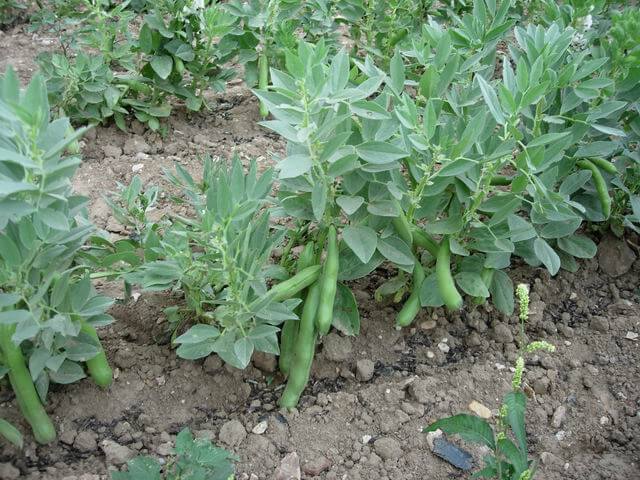
La cosecha y la recolección de la haba
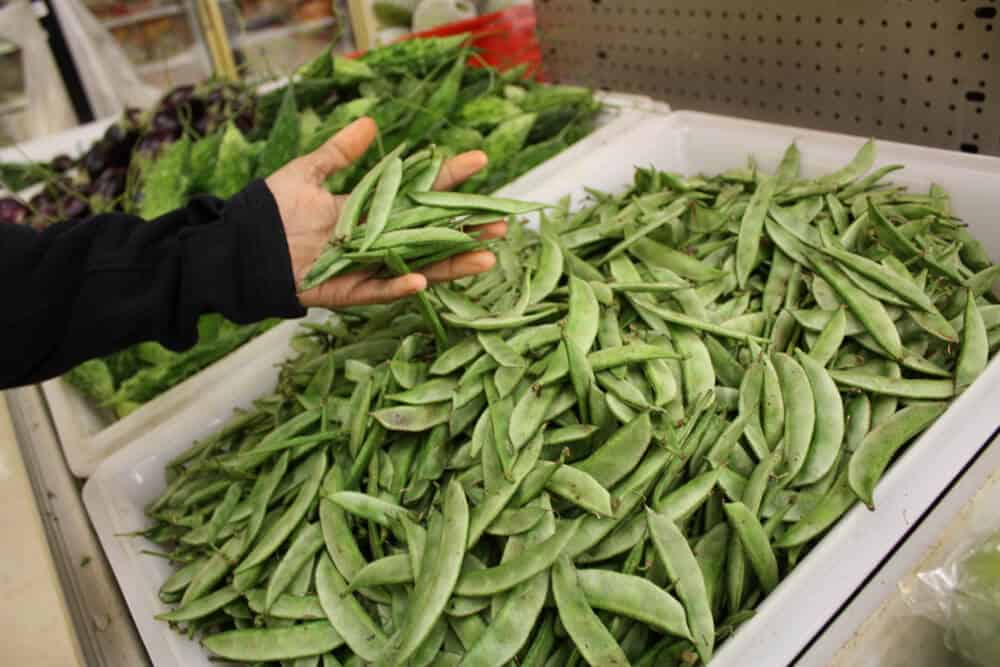 Puede hacerse entre 90 y 120 días después de la siembra, según la variedad. Una misma planta nos puede dar dos o tres cosechas.
Puede hacerse entre 90 y 120 días después de la siembra, según la variedad. Una misma planta nos puede dar dos o tres cosechas.
Si los frutos se recogen demasiado pronto, no se obtendrá todo el rendimiento económico que puede esperarse y, si se retarda, las vainas se endurecerán y el producto mermará de calidad.
El momento para cosecharlas tiernas es cuando las vainas se vuelven amarillas. Retíralas con cuidado para no dañar el tallo.
En cuanto a la recolección de grano seco, éste se hace más tarde, cuando las vainas comienzan a oscurecerse. Debe recogerse el grano antes de que comience a desgranarse de forma natural.
Puedes guardar las pieles de las vainas para luego compostarlas. Si a esta composta le añades un poco de purín de ortigas será un fuerte abono que agradecerán el resto de tus plantas.
Likewise, when you have finished with the broad beans, return the plant to the ground, as they are a rich source of nitrogen for the soil.
Cut the plant down to the base and place the roots into the soil. Then cover them with soil.
Favorable associations with broad beans
They associate wellwith potato, spinach and lettuce.
Many times the crop is associated with other legumes and also with grasses.
Unfavorable associations
It should not be mixed with the cultivation of liliaceae, such as garlic, onion, leek, asparagus or aloe.
The most common pests and diseases of beans
aphids
Application of nettle slurry is recommended as prevention.
To combat them, potassium or biodegradable soap can be applied to the underside of the plants. It should be applied very early in the morning or in the afternoon, when the sun no longer hits the leaves.
The soap will help clean the honeydew excreted by the aphid and soften its cuticle. If the plague persists or is very abundant, after cleaning the leaves with soap, we will apply neem extract, which will act as an insecticide.
There is a specific variety called the black bean aphid. These accumulate at the ends of the stems.
To combat them, it is recommended to blunt the stems from the sixth flower, and spray with potassium soap and then apply the neem extract.
pea thrips
They hibernate in the soil as larvae and after a few days they transform into nymphs. When spring arrives, they attack the crops of broad beans and peas.
To combat them, it is recommended to place meshes around the crops and clean up weeds and waste.
Another form of prevention is to use potassium soap and neem oil.
Sitona
It is a beetle that gnaws the edges of the leaves. The larvae, in addition, can destroy the Rhizobium nodules reducing the nitrogen fixing capacity, affecting the correct development of the plant.
To combat them, we recommend spraying the foliage with contact insecticides and using granulated insecticides for the soil.
Mildew

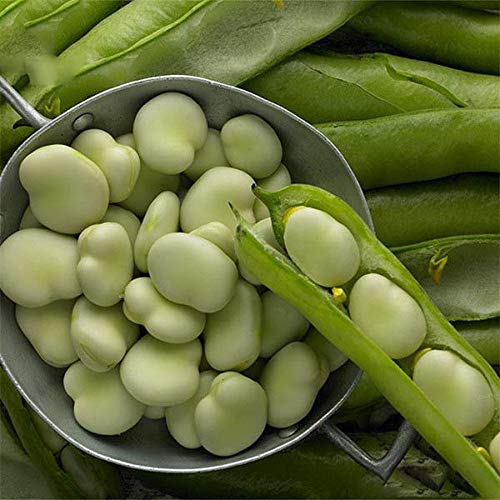
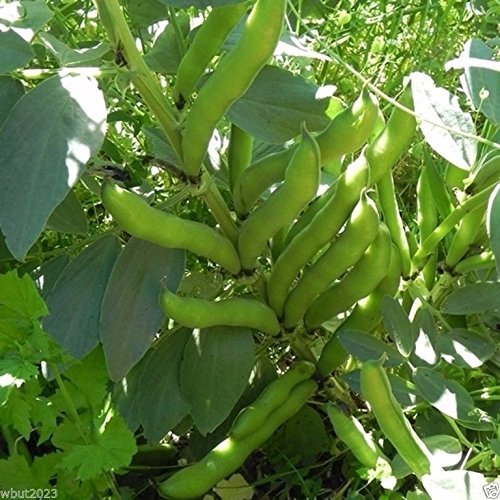
![Photo of How to Plant Turmeric: Complete Guide + [Step by Step]](https://www.complete-gardening.com/wp-content/uploads/2022/08/how-to-plant-turmeric-complete-guide-step-by-step-390x220.jpg)
![Photo of What Diseases and Pests Attack the Olive Tree? [Treatments]](https://www.complete-gardening.com/wp-content/uploads/2022/08/what-diseases-and-pests-attack-the-olive-tree-treatments-390x210.jpg)

![Photo of 14 Types of Orchards: [Characteristics and Operation]](https://www.complete-gardening.com/wp-content/uploads/2021/06/col_rizada_1596697078-390x220.jpg)